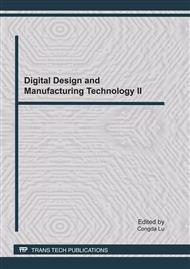p.195
p.199
p.204
p.208
p.212
p.217
p.223
p.228
p.234
Study on Construction of Tyre Tread Pattern Mold and its Machining with 3-Axis Numerical Control
Abstract:
Tyre tread pattern mainly accounts for tyre performance and its endurance. In tyre mold processing, pattern block processing is technologically disturbing, of which the tread pattern is the most challenging. This article first analyses the function conversion of the points from point to plane to space along the tyre tread curve. Aided by GRIP language, it continues to make tread section with spatial curve, and then with the help of UG scanning order, it produces a three-dimensional diorama of accurate tyre pattern. To solve the problem of large errors arising in tyre mold processing with 3 axis numerical control technology, the article proposes a new method to produce tyre tread pattern with 3 axis technology and validates the method. The research contributes to dividing processing of tyre tread pattern, and reducing errors theoretically. Experiments had been done to illustrate that the method can achieve high quality and efficient processing.
Info:
Periodical:
Pages:
212-216
Citation:
Online since:
March 2011
Authors:
Price:
Сopyright:
© 2011 Trans Tech Publications Ltd. All Rights Reserved
Share:
Citation:


